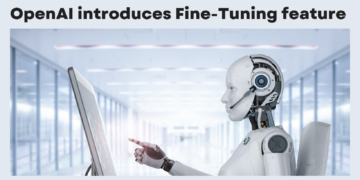In a world where Artificial Intelligence (AI) is rapidly becoming a driving force behind many aspects of our lives, there’s a pressing need to demystify its decision-making processes. Enter the realm of “Explainable AI,” a concept that not only promises to unlock the black box of AI, but also empowers us to understand, trust, and harness the potential of these intelligent systems. In this blog post, we’re about to embark on a journey to unravel the magic behind Explainable AI, exploring its significance, challenges, and the exciting possibilities it brings to the table.
The Black Box Conundrum: Why Explainable AI Matters
Imagine stepping into an autonomous car, designed to navigate through bustling city streets and intricate roadways. As the car whirs to life, you’re left to ponder: How does it make those split-second decisions? This is where Explainable AI comes to the rescue. Traditionally, AI systems, like deep neural networks, have been likened to black boxes. They make decisions based on complex patterns that even their creators struggle to fully comprehend. However, this lack of transparency can breed skepticism and mistrust among users, especially when lives are at stake. Explainable AI lifts the curtain, providing insights into the reasoning behind AI’s decisions, making it a crucial step towards building trust between humans and machines.
The Power of Clarity: Benefits of Explainable AI
- Enhancing Trust and Adoption: Trust is the bedrock of any successful relationship—whether human or human-machine. With explainability, users can gain a deeper understanding of why an AI system made a particular decision, boosting their confidence in its abilities. This is particularly important in fields like healthcare, where AI diagnoses can influence patient well-being. Imagine a doctor collaborating with an AI system to diagnose complex medical conditions. The ability to comprehend the AI’s rationale not only ensures accurate diagnosis but also instills faith in the technology.
- Unmasking Bias and Fairness: AI systems, while powerful, aren’t immune to biases present in the data they are trained on. These biases can result in decisions that perpetuate inequality and discrimination. Explainable AI allows us to uncover these biases, facilitating a fairer and more just implementation of AI in critical domains like criminal justice and lending. By shining a light on biased patterns, we can work towards rectifying them and crafting AI systems that are truly equitable.
- Accelerating Problem Solving: Ever had a conversation with your AI-powered virtual assistant that left you scratching your head, wondering why it suggested what it did? Explainable AI transforms such interactions into enlightening experiences. By clarifying the reasoning behind recommendations, users can make informed decisions faster. This holds immense potential in sectors like finance, where traders can leverage AI-generated insights to make split-second investment choices.
The Challenge of Balancing Complexity and Simplicity
However, achieving explainability in AI isn’t a walk in the park. It involves a delicate dance between maintaining the sophistication of AI models and presenting explanations in a comprehensible manner. Striking this balance requires researchers and developers to tread new ground, creating interfaces and visualizations that transform intricate algorithms into easily digestible insights. It’s akin to translating a complex symphony into a language anyone can understand without losing its essence.
Tools of the Trade: How Explainable AI Works
- Feature Importance and Visualization: Imagine you’re applying for a loan, and the AI system denies your application. With feature importance explanations, you can understand which factors influenced the decision the most—be it credit history, income, or other variables. Visualizations, such as bar charts or heat maps, make this information accessible, making it easier for users to identify areas for improvement.
- Rule-Based Explanations: Rule-based explanations break down an AI decision by listing a series of “if-then” statements. For instance, if an AI model predicts a student’s performance in an exam, these rules might reveal that it considers attendance, study hours, and past grades as contributing factors. This approach offers a transparent view of how the AI arrived at its conclusion.
- Example-Based Explanations: Comparable to storytelling, example-based explanations provide instances from the training data that influenced the AI’s decision. If an image recognition AI identifies a dog in a picture, it might show several similar dog images from its training data. This approach bridges the gap between AI’s world and human understanding.
Looking Ahead
As AI continues to evolve, so too will the field of Explainable AI. Researchers and developers are pushing the boundaries. They are striving to make AI not only intelligent but also comprehensible to the human mind. With advancements in NLP, AI might even explain itself in human-readable language. The futurw will witness a new era of collaboration between humans and machines. This progress could pave the way for AI systems that not only provide recommendations but also educate users about their decisions, empowering them with knowledge.





























